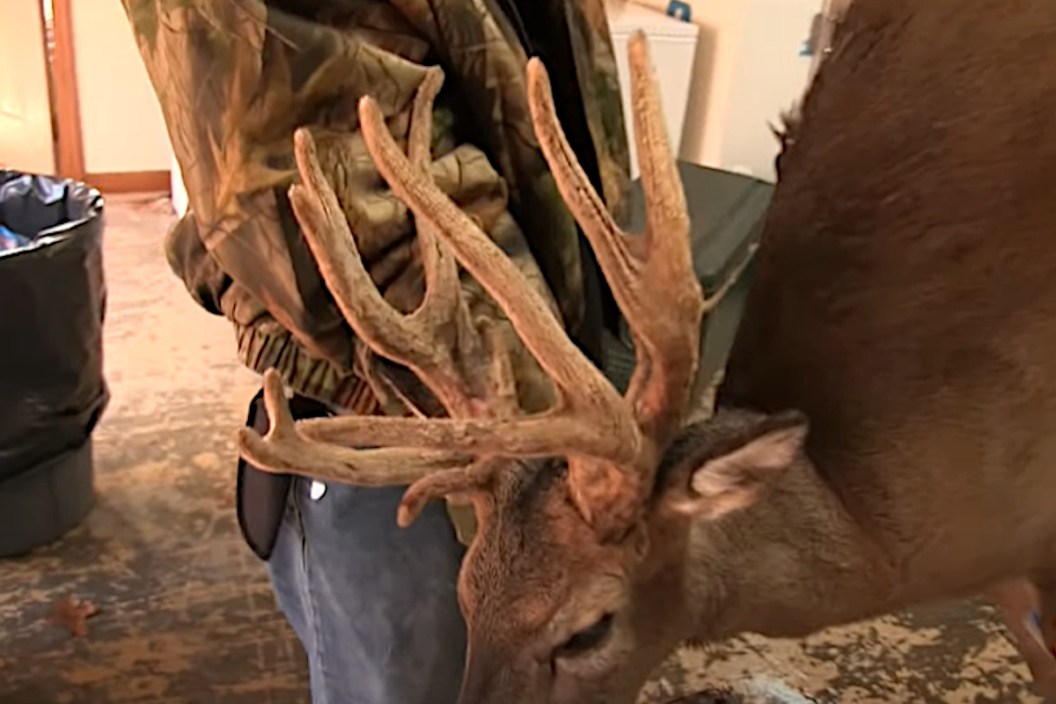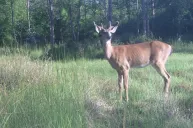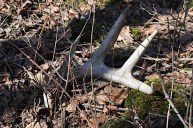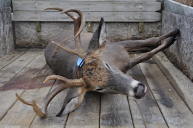Two words that shouldn't go together, but often do: antlered doe. Here's how it happens.
Let's get it out of the way right from the beginning: an antlered doe is a female whitetail deer or other ruminant that has somehow grown a set of antlers. It is a fairly rare happening, but it is also not unheard of that a doe's increase in testosterone levels has caused it to sprout "horns" and make us believe that we're seeing a buck.
This also begs the question, can an antlered deer really be an antlered doe?
Some say that hunters who shoot an antlered doe likely have killed a hermaphrodite, which has both ovaries and testes, and still others says that a whitetail deer with all of a female's reproductive parts, yet having antlers is a true antlered doe. There's a lot of discussion about this rare event and no easy answers.
Hermaphrodites
It is a common definition that a true hermaphrodite has both male and female internal sex organs, ovaries, and testes. Basically, it is an animal that has both kinds of reproductive organs. Often, the term hermaphrodite has also been used to describe an animal with ambiguous genitalia, and in deer, it's possible for a hermaphroditic whitetail to have either male or female external reproductive organs.
Pseudo-hermaphrodites
In deer and other creatures, it is also known as cryptorchid males. This is a tough nut to crack for those in the research community as one deer can possess the internal reproductive organs of one sex, but the external genitalia that closely resembles the opposite sex.
One doe with antlers may have the correct external genitals for a buck, but the correct internal organs for a female of her species.
Rare Antlered Doe
Sometimes a deer believed to be an antlered doe is actually not a female at all, may be part female, or the deer could be a buck with a serious reproductive issue. Just the presence alone of female-looking external sex organs still doesn't make it a doe.
Confused yet?
Across the board research in all situations says that the hormone levels that these deer possess can be pretty messed up. If they produce testosterone in levels above and beyond the average doe they can grow small to medium size antlers, but they generally stay in velvet the entire time that the "doe" has them.
Many seem to only have a velvet-covered pedicle region, small button antlers, or have become a velvet-covered "spike-horn" with the occasional branch, but as the video shows, anything can happen. They almost never have polished, hardened antlers. It's even possible that an injury of some kind could cause a doe to grow the odd antler, coupled with a some kind of hormonal imbalance.
Deer Hunting and the Antlered Doe
If you're going through your cards from your trail camera leading up to opening day and you notice a buck that looks a little different, the answer could be just this simple.
Additionally, if you can tell before you hit the woods this year that you have an antlered female deer on your game camera, you could have a difficult decision to make.
It's possible that you won't even notice and you will connect your arrow, deer slug, or rifle round with one of the least common game animals you could ever see. It all comes down to whether or not it has enough testosterone to produce antler growth. The bottom line is that for many reasons, it just can't be called a reasonably typical female deer, and yet when it comes to North American whitetail deer, anything is possible.
Another good question might be whether you should eat the venison from a deer like this. Honestly, it is a simple matter of contacting your state department of conservation and talking about the situation with a conservation officer. Most states usually give their acting officers the onsite ability to grant another tag to the hunter if they deem that the first animal was a legally taken, and that the hunter doesn't want it.
These aren't diseased animals, just creatures that have been injured, grew up with some kind of chemical imbalance, or just formed the wrong way in the womb. In any case, when the day arrives that you harvest your buck and you turn it over to field dress it and notice that it doesn't have the parts you're expecting, don't be alarmed. Just know that it happens and the scientific community is still working on it.
Chances are you can still eat it, and antlers are antlers, right? Just consider yourself fortunate to have had the opportunity to harvest a deer and try to get some answers from a credible authority.
Looking for a new way to display those antler sheds? Go to Rack Hub and use the coupon code Craiger. Be sure to follow my webpage, or on Facebook and YouTube.
READ MORE: GEAR REVIEW: MAVEN B.1 BINOCULARS




